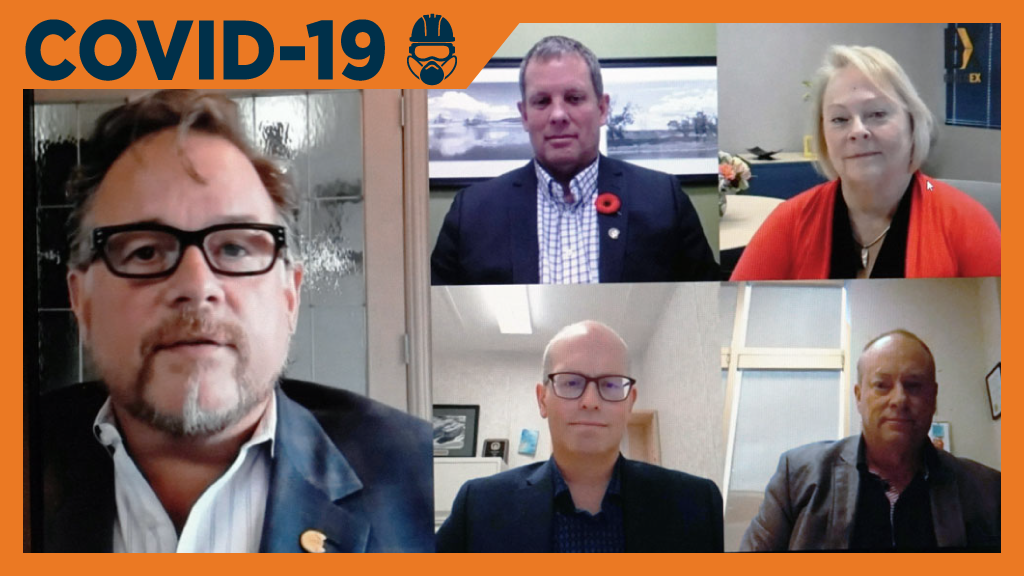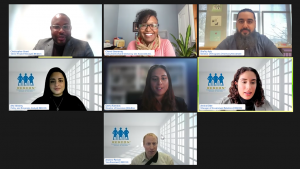When BURNCO Rock Products saw its first worker test positive for COVID-19 in Calgary, Alta., the company immediately removed the employee from the site. Tracing was initiated, eight co-workers were isolated and three work areas were shut for sanitation.
The company was quick to act and was fortunate to eliminate possible transmission through the site, said general manager Norm Kuntz.
That was in mid-April.
“It was a lesson for everyone and showed that our protocols would work,” Kuntz said at a BUILDEX Alberta webinar on the construction industry’s response to the pandemic in the Prairie province.
Sharing that information with all employees was key to helping to create buy-in from other employees that health and safety protocols were vital, he pointed out.
“Nobody likes to share when something goes wrong. We’ve seen it play out in the COVID scenario… almost there’s a degree of shame associated with it,” said Bill Black, president of the Calgary Construction Association (CCA), who moderated the panel session, which was part of the larger Buildings Week virtual event.
But Black noted that as more information was shared among the CCA’s members and other building groups and associations across the province on COVID-19 experiences, the industry gained an understanding of the issues.
Panellist Karen Rutherford, executive director of the Alberta Roofing Contractors Association Ltd., said by sharing broadly with her members various examples of COVID-19 cases in the industry, backlash in the workplace to the protocols was eliminated.
“I’m comfortable that the buy-in for my membership was 100 per cent.”
Consistent messaging to a GCs’ workers and all the trades is paramount to getting everyone on side, added panellist Toby Hendrie, project director, PCL Construction Management Inc.
Bob Robinson, president of Westcor Construction Ltd., told the webinar audience the contractor set up a pandemic planning group led by a co-ordinator to reinforce the protocol steps and dispel any negative viewpoints of the virus on sites and in the office.
COVID-19 drills were organized to prepare for possible outbreaks. Ironically, a day after a drill the first COVID-19 case popped up on one of its sites. The workers were prepared and did what they needed to do to mitigate the situation, he told the webinar.
Robinson said in a different time adding new health and safety rules such as wearing masks to large groups of workers might take months or even years for compliance but the commercial industry was quick to make the shift largely because it was battling a common enemy.
Hendrie said he hopes the new site sanitation rules continue after the pandemic.
“我们现在have way more toilets, hot running water. It really is quite different compared to where it was nine months ago,” he said.
Black said after the pandemic he hopes the construction industry, which employs about 80,000 people in Calgary, will continue to collaborate on the scale it has throughout the crisis.
Robinson agreed, adding by moving away from a “command and control” business model to one that empowers employees will encourage innovation.
Rutherford said the industry will face “significant challenges” in 2021.
“We’re all going to have do things differently. This kind of collaboration, if it can be sustained, will be life-altering for this industry.”
Asked by an attendee about the costs of COVID-19, Black said they are mounting from the protocols that GCs continue to manage.
Trades are required to meet additional measures and there is an impact of “reduced productivity” which varies from trade to trade, he said, adding he is aware of one midsized GC which had spent $180,000 on COVID-19 costs in the first three months of the pandemic.
Black pointed out an industry concern is that many public owners are refusing to recognize additional costs contractors pay out.









Recent Comments
comments for this post are closed